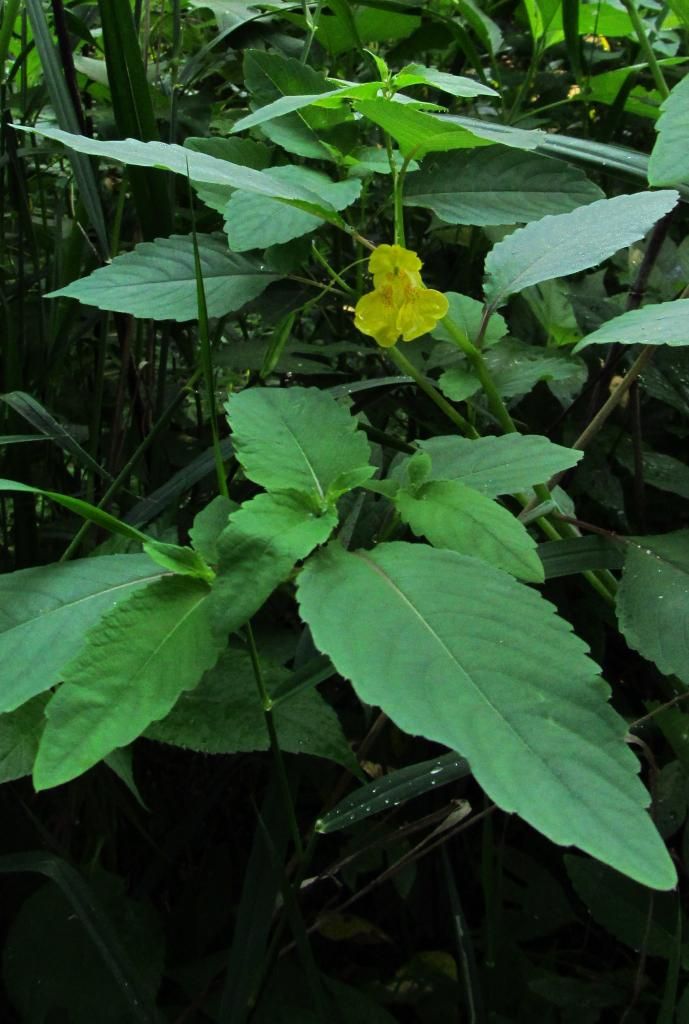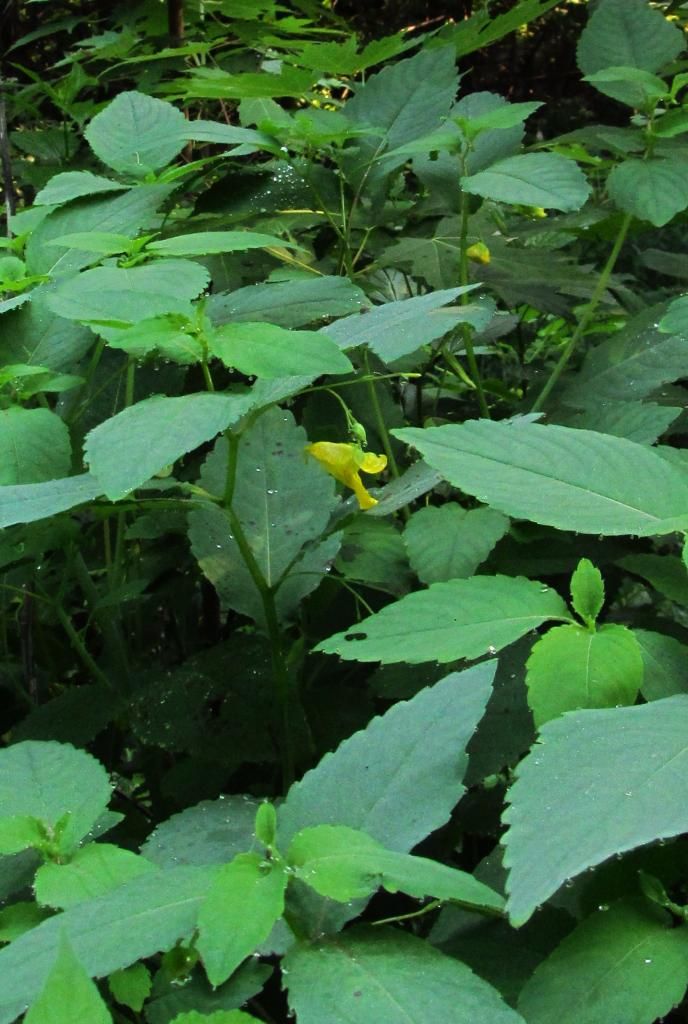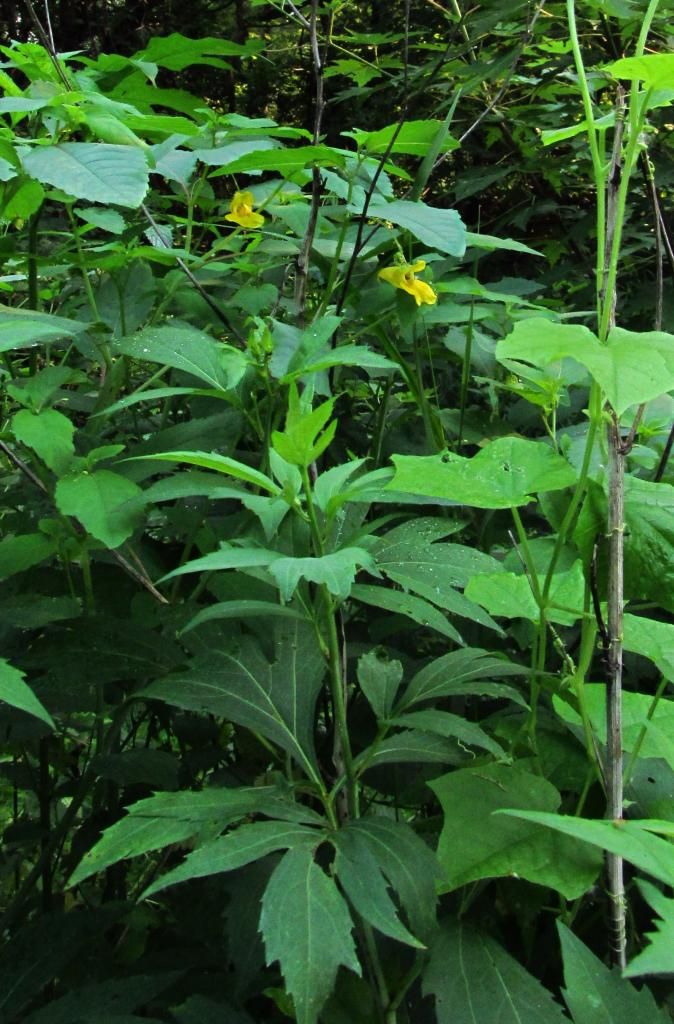Dry and unseasonably cool weather has made this a perfect week to get out and see summer wildflowers. One of my summer favorites, American bellflower, is prevalent along most of the wooded trails in central Iowa. Dozens of prairie flower species are in bloom, and you can find many in small city plantings (for instance, around Gray’s Lake in Des Moines and on nearby trails) if you don’t have time to get to a native or restored prairie.
This week’s featured native plant thrives in wooded areas where the ground is moist, and prefers partial sun. Yellow jewelweed (Impatiens pallida) is also commonly known as pale touch-me-not or pale jewelweed. It’s reportedly less common than orange jewelweed, a closely related plant. For centuries, various Native American tribes used jewelweed to soothe itches from poison ivy rashes, mosquito bites, and hives. I know hikers who swear by it. Conveniently, the plant often grows near poison ivy and stinging nettle, legendary skin irritants. This post on Nature Labs explains how to use jewelweed and includes more detail on its medicinal properties.
Incidentally, the common name “touch-me-not” doesn’t mean plants in this family are harmful to touch. Rather, the name was inspired by “the sensitive triggering of seeds from the ripe capsule,” which tends to explode when touched.
After the jump I’ve enclosed several photos of yellow jewelweed, growing along a stretch of the Windsor Heights bike trail. Although I’ve walked or ridden my bicycle by the spot literally hundreds of times in the last dozen years, I never noticed this plant growing there until this summer–which should come in handy, now that the mosquitoes are out in force.
The Illinois Wildflowers website has posted a detailed description of Impatiens pallida using correct botanical terms. I tend to overlook the leaves, but the flowers are distinctive when blooming. Apparently those reddish spots are usually but not always present. I assume they serve the same function as the lines inside beardtongue blossoms: to help guide pollinators.
Here’s a side view of one blossom. Note the irregular shape.
In this shot, yellow jewelweed are blooming behind foliage of cutleaf coneflower, which will bloom later this summer. Some kind of young maple tree is growing in the background. I don’t know what that vine is to the right. UPDATE: According to Eileen Miller and Leland Searles, the vine is likely moonseed (Menispermum canadense).
Here’s a better view of that unidentified vine growing alongside the jewelweed.





